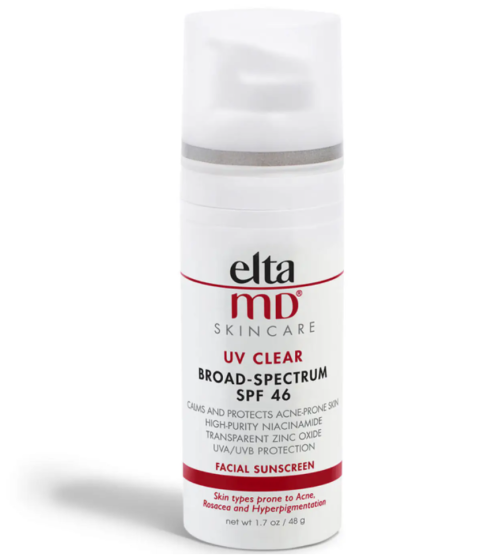Our editors independently select these products. Making a purchase through our links may earn Well+Good a commission
Derms Say Most People Aren’t Wearing Enough Sunscreen—Here’s Their Top Tip for Ensuring You’re Properly Protected
Sunscreen protects your skin from UV rays, and the more you wear, the better. Learn everything you need to know about layering sunscreens.

Ask any dermatologist what the most important skin-care product is, and without skipping a beat they’ll answer “sunscreen.” But though you may be applying the derm-recommended SPF 30 on the reg (good on you!), you may not be getting as much protection as you think. Derms suggest using one teaspoon of sunscreen for the face and neck and a shot-glass worth for the body, but in reality, most people are using a lot less than that. So if you’re not using a teaspoon of a foundation with SPF 30 (because who is?), you’re not actually getting that level of sun protection—it’s probably closer to SPF 10.
Experts in This Article
board-certified dermatologist based in New York City
board-certified dermatologist specializing in medical and cosmetic dermatology
But don’t worry: You don’t have to slather on an unrealistic amount of a single product to ensure you’re properly protected. Derms say you can layer your SPF formulas, instead.
“The benefits of layering SPF—for example, a sunscreen with an SPF-containing make-up—is that you’re likely not using enough sunscreen,” says Elizabeth Kream, MD, dermatologist and third-year resident at the University of Illinois at Chicago. “Adding a second layer of the same product, or a second product like an SPF compact powder, will bring you closer to the recommended dosage and closer to that true SPF.”
Layering sunscreens can also allow you to get different types of protection. For example, sunscreens that use mineral blockers, like titanium dioxide and zinc oxide, physically protect your skin from UV rays by deflecting the sun rays away from your skin. Chemical blockers, like homosalate and octinoxate, work by absorbing the UV rays before your skin gets a chance to absorb them. By layering the two, you’ll get both types of protection.
Learn everything you need to know about layering sunscreen below.
The dos and don’ts of layering sunscreens
1. Let the sunscreen dry between layers
“If you put a mineral sunscreen on wet skin, it doesn’t go on,” saysShirley Chi, MD, a board-certified dermatologist in Southern California. “And while chemical sunscreen may blend into wet skin, it’s not going to work as well.” Chemical sunscreens work by interacting with the top layer of your skin to absorb UV rays so that these rays can’t enter the skin and do damage. If you’re these types of formulas to wet skin, they won’t be able to penetrate as easily, which means they won’t work to their full potential.
2. Start with a base layer of simple sunscreen
When layering SPF, Dr. Kream says to always start with a simple sunscreen, meaning a product that’s sole purpose is to provide sun protection (so, not an SPF foundation). To get optimal coverage, follow Dr. Chi’s above advice and make sure your other skin-care products are completely dry before you go in with your sunscreen. Aim to apply a teaspoon of product to your face and neck. Another way to measure is by making a peace sign with your hand, and drawing a line of sunscreen onto both fingers.
3. Don’t use avobenzone
When layering a chemical with physical, Dr. Kream says to steer clear of chemical sunscreens that use avobenzone. Those are best used on their own.
“Avobenzone, in particular, doesn’t play well with others in that it can become easily inactivated and requires the addition of photo stabilizers,” she says. “Thankfully there are lots of other options that don’t have avobenzone as the active ingredient.”
4. Don’t forget to reapply
Applying multiple layers of sunscreen just ups the amount of SPF you’re wearing. It doesn’t mean you can stretch the amount of time between reapplication.
“Reapplication is recommended every two hours, or every 80 minutes if sweating or swimming, regardless of the SPF,” says Dr. Kream. “Even if you’re applying SPF 100, you must re-apply every two hours. This is simply because no matter how well a sunscreen is blocking the UV radiation, it wears off after a few hours.
Shop a few layerable sunscreen options

EltaMD UV Clear Broad-Spectrum SPF 46 — $39.00
Dr. Kream loves this sunscreen from EltaMD, which combines physical blocker titanium dioxide with chemical blocker octinoxate to provide broad-spectrum SPF 46 protection. Its also a great sunscreen for acne-prone skin.

Tower 28 Beauty SunnyDays SPF 30 Tinted Sunscreen Foundation — $30.00
This tinted foundation uses non-nano zinc oxide, a physical blocker, to provide SPF 30 protection from UVA and UVB damage. It’s a great option for those with sensitive skin, as it has the Seal of Acceptance from the National Eczema Association.

Supergoop! (Re)setting 100% Mineral Powder Sunscreen SPF 35 PA+++ — $38.00
Available in four shades, this SPF 35 powder is great for reapplying sunscreen throughout the day without messing up your makeup.
How to find the best sunscreen for your skin:
Oh hi! You look like someone who loves free workouts, discounts for cutting-edge wellness brands, and exclusive Well+Good content. Sign up for Well+, our online community of wellness insiders, and unlock your rewards instantly.
Sign up for the Well+Good SHOP Newsletter
Get exclusive deals on wellness, beauty, fitness, and food products that have been hand-picked by our editors.
Got it, you've been added to our email list.










